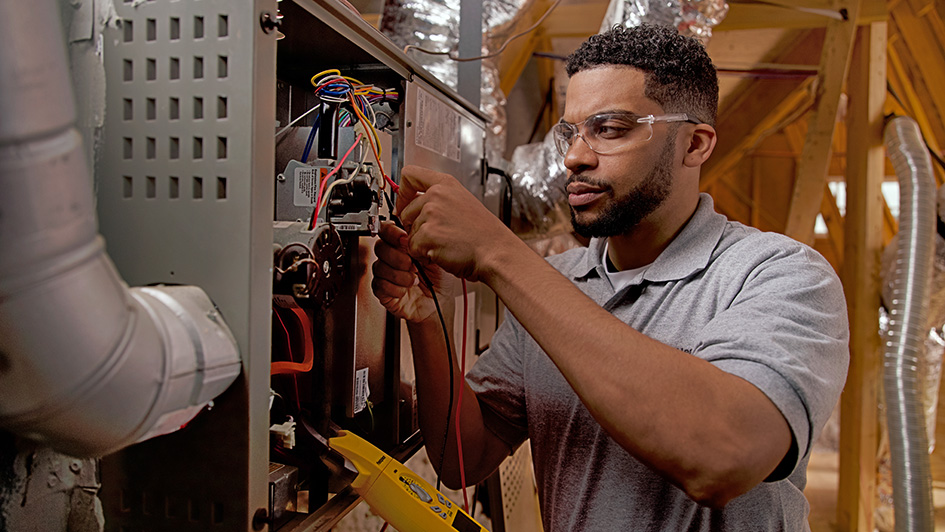
A furnace is almost always a background player in your home, helping keep you warm during the cold winter months. It frequently doesn’t get noticed until a malfunction appears.
One source could be that your furnace has a cracked heat exchanger. It can be a safety risk, so it’s critical to learn the symptoms of a cracked heat exchanger and what you can do if you believe that is the problem.
What Is a Heat Exchanger in a Furnace?
A heat exchanger transfers heat from the combustion chamber in your furnace to the air that flows through the ventilation. It usually does this via coils or tubes that warm the air while functioning as a barrier to keep byproducts formed in the combustion chamber, called flue gasses, from getting out into your home.
Is a Cracked Heat Exchanger Dangerous?
Given its key role, it shouldn't come as a surprise that a damaged heat exchanger can be very dangerous. A crack in the heat exchanger can enable dangerous gasses – including carbon monoxide, which can be lethal – to flow across your home.
For obvious reasons, do NOT run your furnace if you believe you're dealing with a cracked heat exchanger, as this could make the entire family sick. Reach out to an HVAC professional immediately if you think your heating has a cracked heat exchanger that needs repair.
Four Signs of a Cracked Heat Exchanger:
- Furnace switches off: A crack in your heat exchanger may cause your furnace to shut off.
- Odd Smells: If the air coming out of your furnace has a powerful chemical smell, it could be evidence gasses are leaking through cracks in your heat exchanger. These byproducts, which may smell like formaldehyde, are a significant warning sign.
- Carbon monoxide alarm initiates or you feel poisoning symptoms: If a cracked heat exchanger is emitting carbon monoxide inside your home, your carbon monoxide alarm may go off or household members may start experiencing signs of carbon monoxide poisoning. Side effects include headaches, dizziness, weakness, nausea, vomiting or feeling drowsy. If your alarm goes off or you feel sick, exit the home as soon as you can and then call for help.
- Soot: If you find black sooty collecting on the exterior of your furnace, it’s an indication something might be seriously wrong.
What You Can Do if a Furnace Heat Exchanger is Cracked
If you worry your furnace has a cracked heat exchanger, contact a pro well versed in furnace installation Magnolia as soon as possible so they can examine your system and, if required, start a furnace heat exchanger replacement. Costs should fluctuate depending on the situation, but estimates can roughly suggest $1,000 to $3,000.
Estimates aside, the good news is that heat exchangers are often covered by the warranty. It's a good idea to review the warranty paperwork on your furnace, because while the warranty may not cover the entire cost of repairs, it can significantly reduce your bill.
How to Prevent a Cracked Heat Exchanger in Your Home
One of the most convenient ways to prevent a problem in your furnace overall is through regular furnace maintenance. Furnaces provide the best possible return on investment when they run efficiently. Calling a trained professional to check your furnace for old parts, clogged filters and other likely problems can keep you from getting a big bill later on.
It’s also beneficial to take a look at your furnace filters every few months – it’s ideal some filters be replaced every 90 days or sooner if they are dirty or grimy. While the filters aren't connected to the heat exchanger itself, the strain of pulling air through a clogged filter makes the entire furnace work harder to do its job. And the harder your furnace has to work, the more strain components like the heat exchanger will endure.
